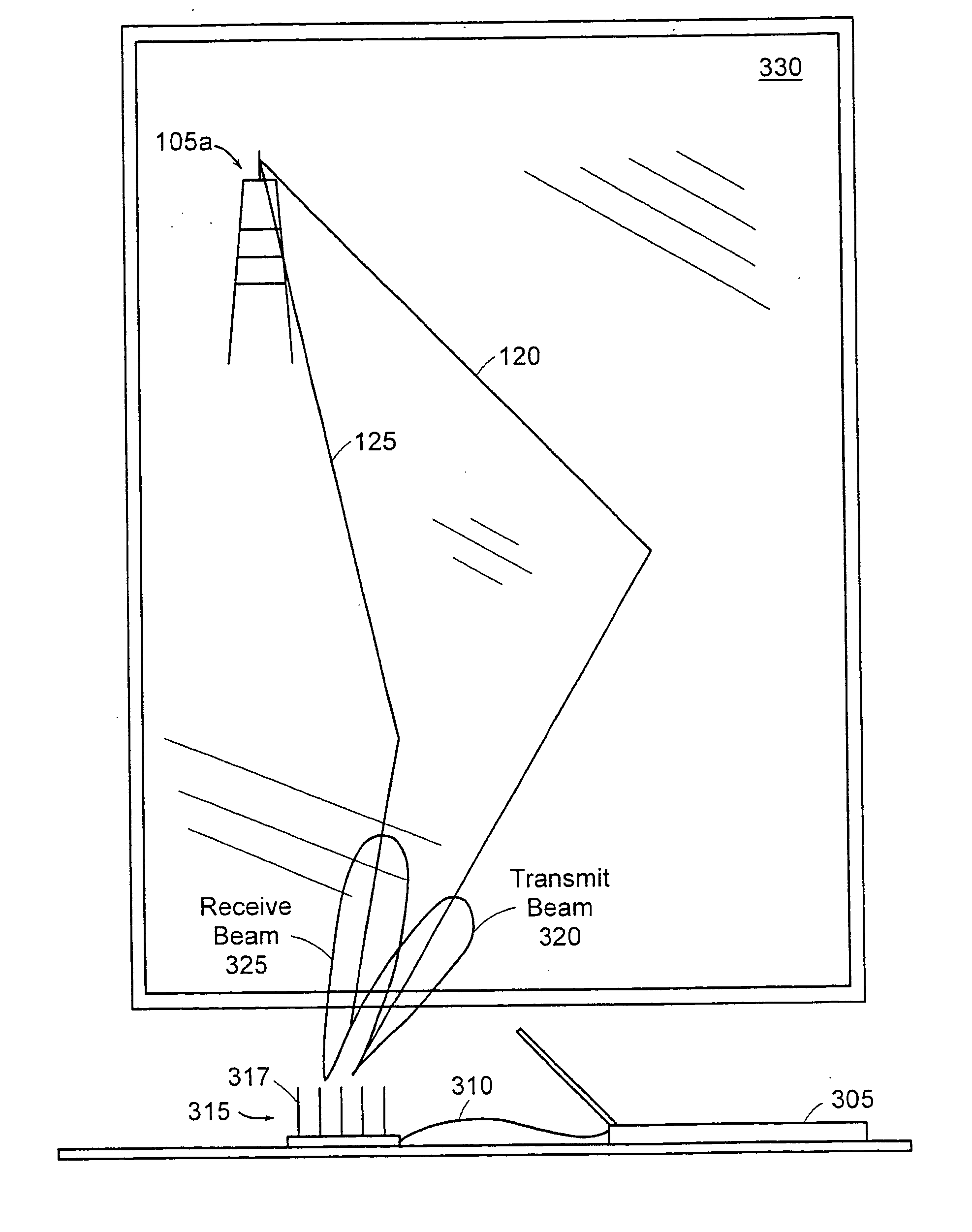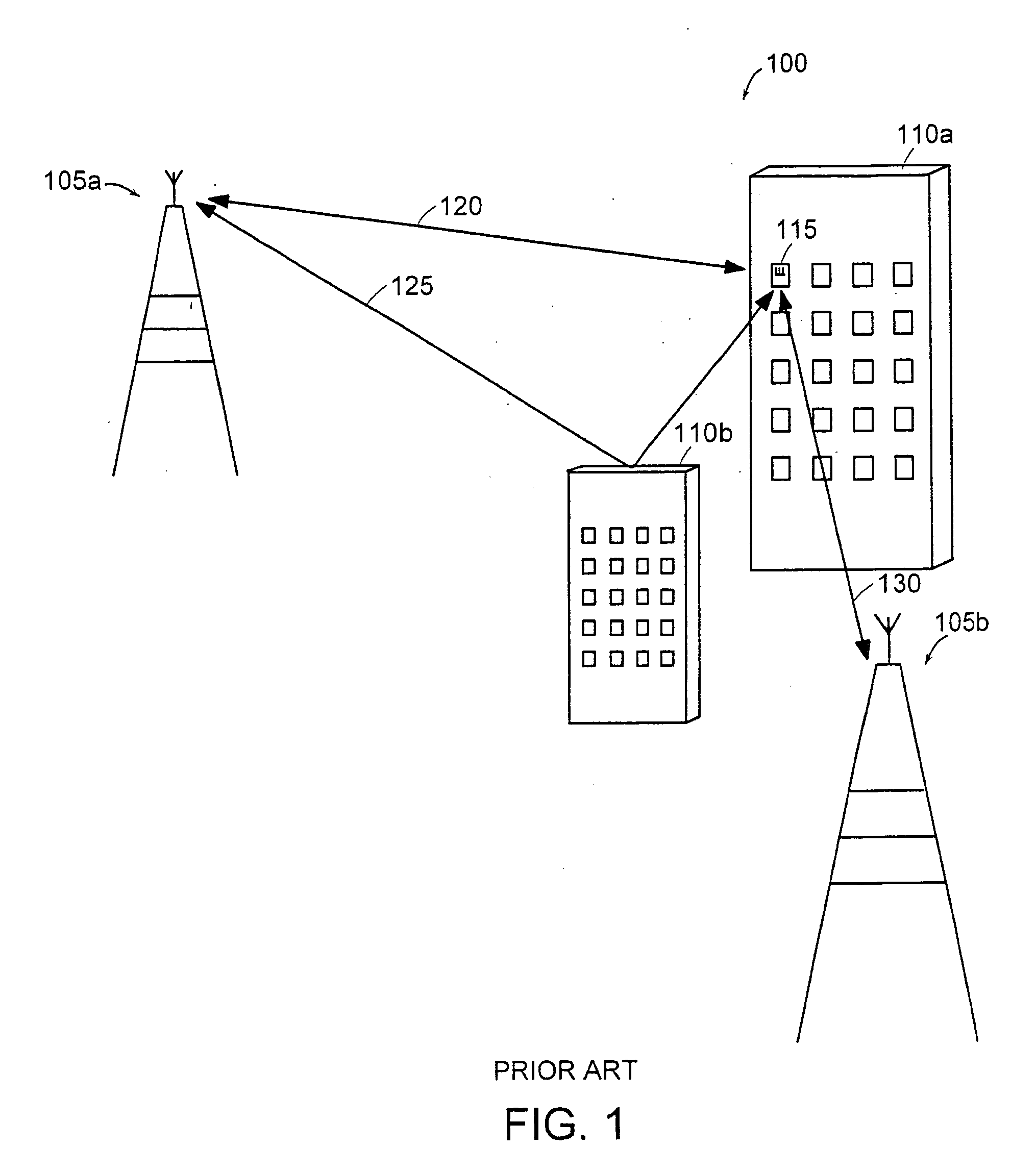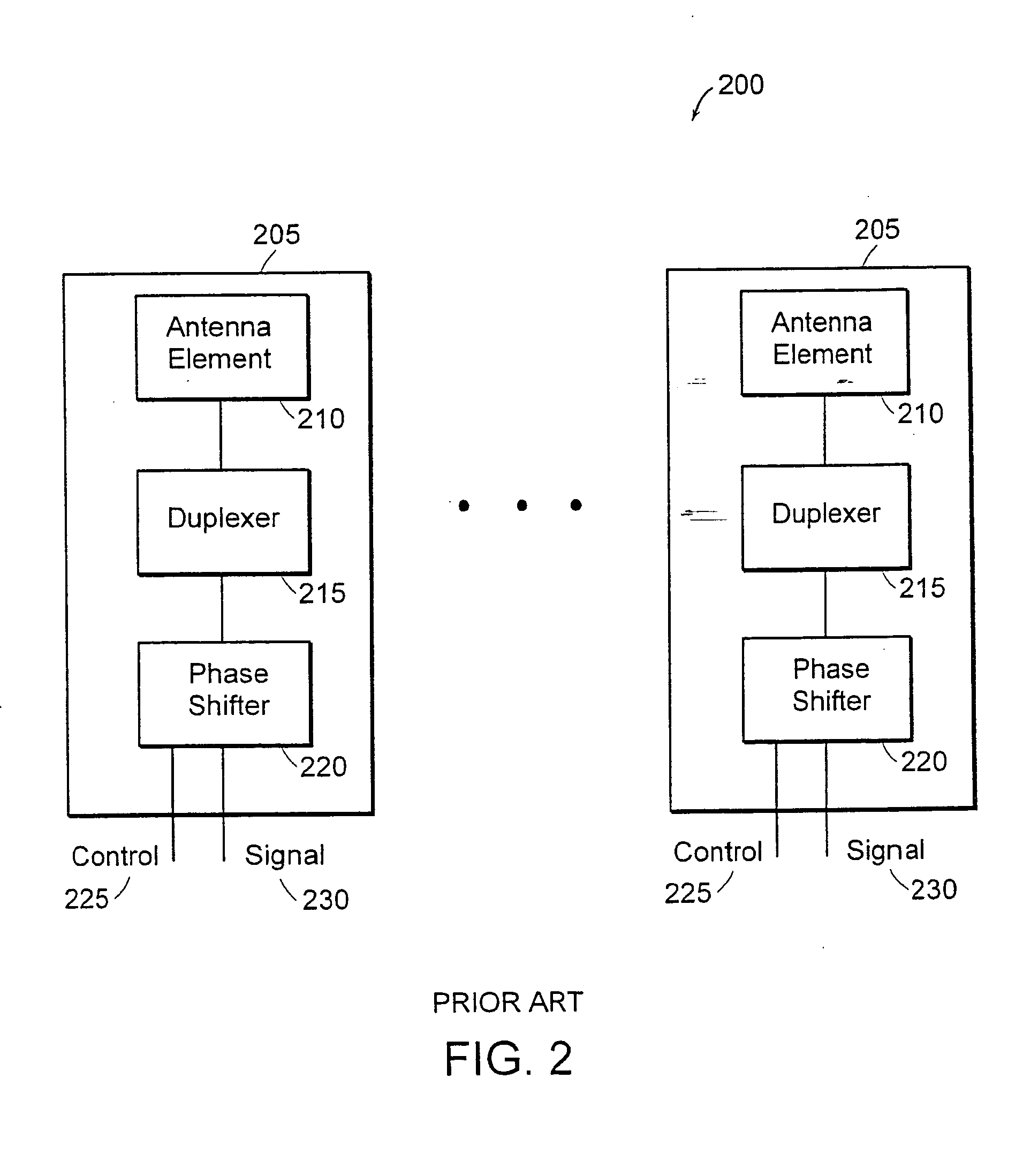Method and apparatus for frequency selective beam forming
a beam forming and frequency selective technology, applied in the field of frequency selective beam forming, can solve the problems of signal-to-noise ratio and interference causing communication disruption, and achieve the effect of improving gain and optimum gain
- Summary
- Abstract
- Description
- Claims
- Application Information
AI Technical Summary
Benefits of technology
Problems solved by technology
Method used
Image
Examples
Embodiment Construction
[0037] A description of preferred embodiments of the invention follows.
[0038]FIG. 3 is a diagram illustrating an example usage of the present invention. A portable personal computer 305 is coupled via an antenna cable 310 to an antenna array 315. The antenna array 315 is capable of forming a directive beam due to the spacing of the antenna elements 317.
[0039] As shown, the antenna array 315 provides two beams: a transmit beam 320 and a receive beam 325. The transmit beam 320 is directionally pointed to transmit a signal 120 through a window 330 to an antenna tower 105a in an optimal direction. Similarly, the receive beam 325 is directionally pointed to receive a receive beam 125 from the antenna tower 105a through the window 330 in an optimal direction.
[0040] In the case of CDMA for a subscriber unit, transmit (TX) signals operate at 1850-1910 MHZ and receive (RX) signals operate between 1930-1990 MHZ. The difference in frequencies between these two signals is enough to cause, fo...
PUM
 Login to View More
Login to View More Abstract
Description
Claims
Application Information
 Login to View More
Login to View More - R&D
- Intellectual Property
- Life Sciences
- Materials
- Tech Scout
- Unparalleled Data Quality
- Higher Quality Content
- 60% Fewer Hallucinations
Browse by: Latest US Patents, China's latest patents, Technical Efficacy Thesaurus, Application Domain, Technology Topic, Popular Technical Reports.
© 2025 PatSnap. All rights reserved.Legal|Privacy policy|Modern Slavery Act Transparency Statement|Sitemap|About US| Contact US: help@patsnap.com



